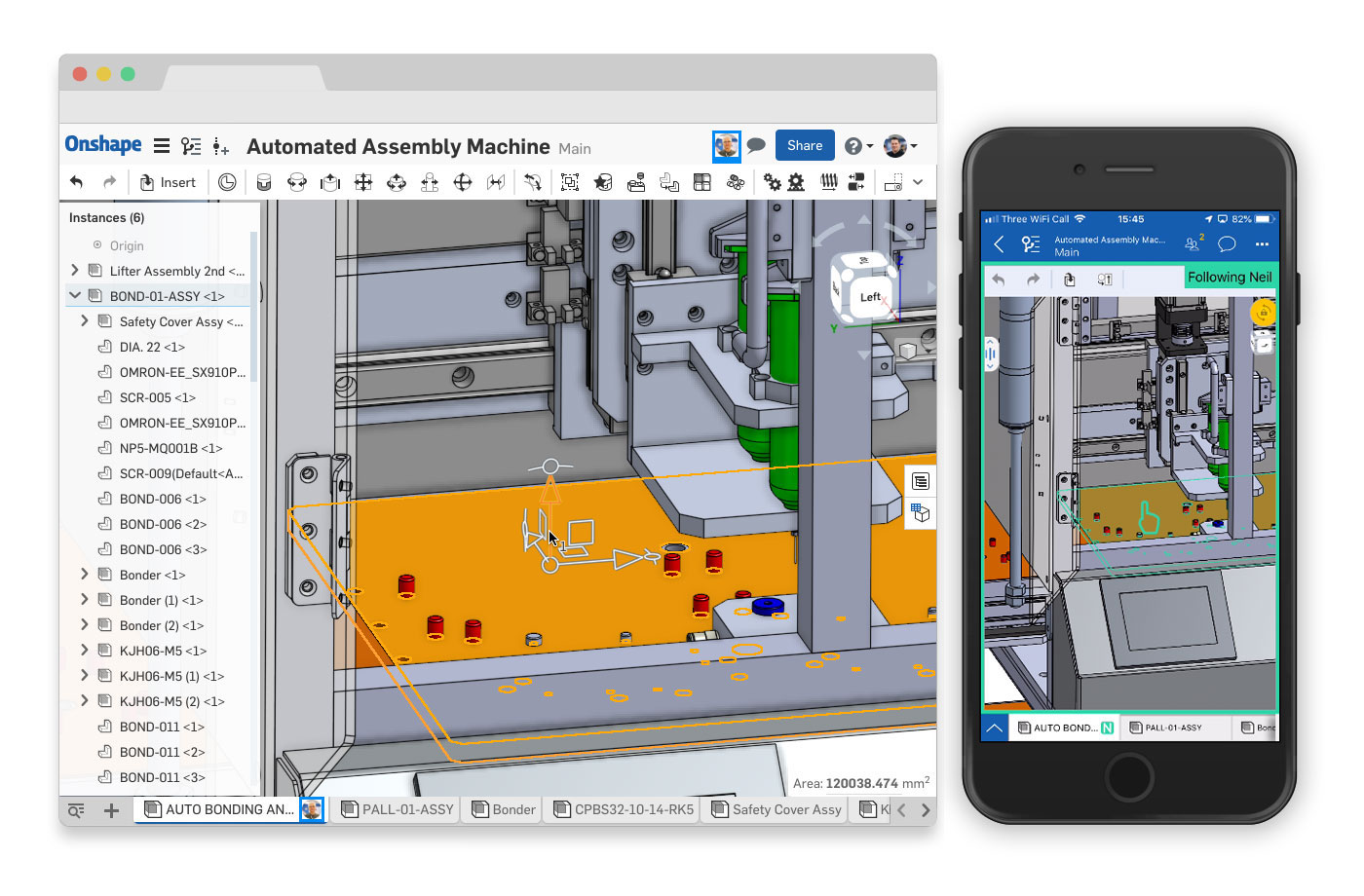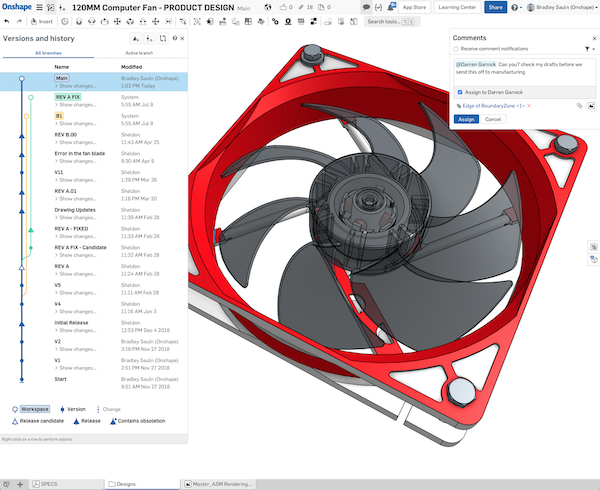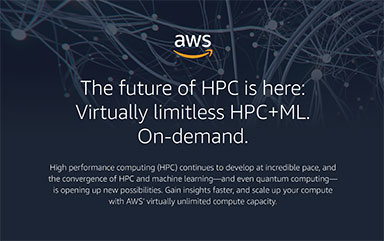The State of Product Development According to Onshape
New report shows engineers most interested in transforming early-stage design workflows in areas like collaboration, version control and improved visibility.

Onshape’s built-in collaboration tools allow multiple people to simultaneously work on the same part or assembly. Image Courtesy of Onshape.
Latest News
July 15, 2019
Involving too few people in the product development process. Getting hung up in serial workflows that lead to protracted product delays. Putting unnecessary constraints on innovation through formal and rigid design processes and controls.
Those are some of the critical challenges facing engineering teams today, confirmed by Onshape’s recently released State of Product Development & Hardware Design 2019 report.
The survey of 850 product design and manufacturing professionals takes stock of how teams evaluate their development processes along with what they identify as top priorities for improvement.
Not surprisingly, two out of three companies believe making improvements and changes at the earliest stages of the design process would yield the biggest benefits. In addition, rather than swapping out any particular CAD program or implementing advanced technologies such as generative design or additive manufacturing, most survey respondents said modifying and improving design processes was a far greater imperative for boosting productivity.
Specifically, managers and executive-level respondents said visibility, or the ability to monitor the product design team’s progress anytime without an over-reliance on meetings, email exchanges or extended phone calls, was critical, cited by 89% of respondents. Similarly, individual contributors were interested in earlier and better communication between an extended design team (cited by 89% of those respondents) and 86% cited better version control as critical for reducing errors that result from working on a wrong version of a particular design or receiving important and relevant data too late in the cycle.

Onshape’s built-in version control and release management capabilities address the headaches surrounding traditional check-in and check-out data management processes. Image Courtesy of Onshape.
“Companies want transparency to engineering while it’s happening, not just at the end,” notes Jon Hirschtick, Onshape CEO. “They want to enable the entire enterprise to see what’s happening and get more people involved.”
Overall, companies gave themselves high marks for productivity and innovation: Fifty-eight percent of respondents to the Onshape survey rated their company’s innovation level as good or excellent, while nearly half (49%) said the same about their productivity levels. There was a high correlation between companies that saw themselves as highly innovative and “excellent” or “good” at productivity.
Cloud-Based Tools Focus of Results
What the innovative and productive companies had in common was the embrace of cloud-based productivity tools, according to Onshape. The survey found that 78% of companies that rated themselves as “excellent” for innovation used one or more public cloud file-sharing services. Cloud-based product data management (PDM) or product lifecycle management (PLM) solutions were also linked to innovation and productivity, the survey found: Seventy-five percent of firms using a cloud-based PDM/PLM systems said their ability to drive innovation was “good” or “excellent,” while those using cloud versions of these platforms were twice as likely to be bullish on their innovation capabilities compared to companies using on premises PDM/PLM platforms.
The survey found that companies overwhelmingly credit PDM/PLM systems for preventing costly mistakes, but 45% said the systems slow down the design process and 42% said the platforms block access to design data when it’s needed. The requirement of older systems to check files in and out to track the latest design version prevents teams from working in parallel, which ends up slowing down the design process and impeding collaboration and creativity.
“While you store data in files, you can’t have two people changing it at the same time,” Hirshtick explains. “It’s the nature of a file-based system—the check in and check out makes it hard to be innovative.”
Cloud platforms, including Onshape’s CAD tool, manage data without those traditional restraints so changes are tracked and designs are versionable without the waiting game and delays. Says Hirshtick: “It’s odd to think of in the world of design tools and CAD data management, but in the world of everything else, it’s obvious and the way it’s happening.”
Watch this video to hear from Onshape customers about how they are using the CAD tool to improve their product development processes.
More Onshape Coverage
Subscribe to our FREE magazine, FREE email newsletters or both!
Latest News
About the Author
Beth Stackpole is a contributing editor to Digital Engineering. Send e-mail about this article to [email protected].
Follow DE





